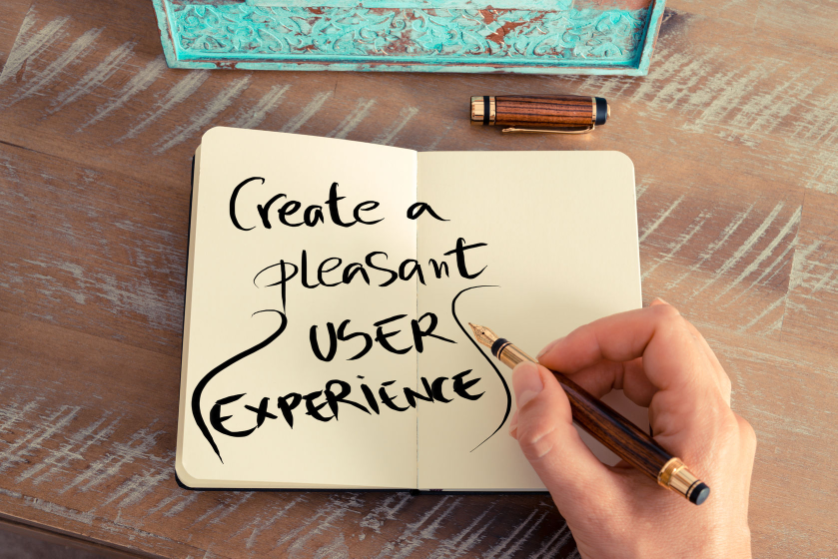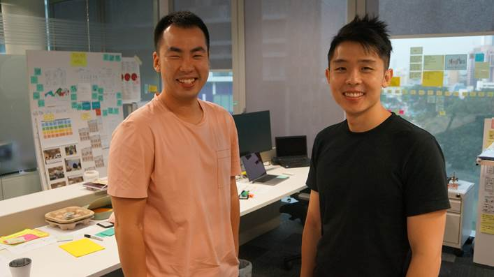The crUX of the matter — a pleasant user experience

TL:DR: When it comes to government digital services, a good UX design means less frustration on the part of citizens. At GovTech, a team of UX designers are working behind the scenes to streamline processes and improve touch points between the government and citizens. TechNews spoke to Mr Edison Chee and Mr Philip Man about crafting a good UX.
Have you ever been to a restaurant with fantastic ambience and delicious food, only to lose your appetite because of a rude waiter? A poor user experience (UX) could ruin the good work of every other department in an organisation. Hence, it is important to pay attention to the fine details of the customer journey from the moment of first contact to when they leave satisfied.
UX is equally important in the tech sector, and a government that wants to deliver value to its citizens through digital services cannot afford to ignore it. Mr Edison Chee (Ed) and Mr Philip Man (Phil), UX designers at the Government Technology Agency of Singapore (GovTech), spoke to TechNews about what good UX means to them.

Q: What is UX design in the context of government digital services, and why is it important?
Ed: Basically, UX stands for user experience, and my job as a UX designer in GovTech is to make sure that citizens’ interactions with government digital services are seamless and pleasant. We do our best to improve the accessibility and usability of apps that we put out there for citizens to use, as well as help make public sector processes easier for citizens to navigate.
Phil: In our context, UX is the expression of government policy. Citizens don’t experience a policy paper; what they experience is the implementation of that policy, which could be in the form of a government digital service. At the end of the day, they’ll be asking themselves “Does the service feel good? Was it useful? Was it easy to use?” So good UX design helps make sure that the policy intent is achieved with minimal frustration on the part of citizens.
Q: How do you create a good UX?
Ed: We like to start with research. This could be desk research, where we look at trends and data about citizens in a specific context. Sometimes, we visit online forums and see people complaining about a certain process, and that tells us that we need to look into something. Another way is to talk to people and observe their behaviour, engaging them in a very intimate manner to find out as much as we can about how they live their lives and how they interact with the government.
Phil: Sometimes, it’s really hard to capture quantitatively in a survey or even through digital means why a person does something the way they do. This is where having an honest face-to-face conversation can reveal many more insights, which we can then act on to improve UX. A large majority of people we speak to say they’re grateful that we took the time to listen to what they had to say. They feel like they are part of a process to improve the UX for others.
Ed: Getting the users to test a prototype of an idea is also critical. Sometimes it could be as simple as coming up with an online form, and you want to know whether people know how to read and use the form, whether or not the buttons are visible enough. If people can complete those tasks easily, then you have something successful. I’m never sure that something is going to work until I see it being used.
Q: What is one misconception about UX design that you would like to set right?
Phil: People tend to think that UX design is a compartmentalised process. In reality, it can be rather messy. You might start with research, but just because you’ve talked to a lot of people doesn’t necessarily mean that our solutions are guaranteed to be great. The key thing to note is that because we’re always learning, and learning different things at different times, the process is inherently messy.
Ed: I agree with Phil. I think the important thing to note is that UX design is a continuous process. We are continuously testing small ideas, so we want to have constant feedback on how people might interact with our solution, even after it has been released, and we adapt the solution accordingly.
Q: What are some of the biggest challenges you face as a UX designer?
Ed: For me, the most difficult thing is personal biases. Sometimes, these biases are transparent to you—you don’t even know you have them until someone else points it out to you. When you have some pre-conceived ideas about how something should look, or how something should be done, then it becomes an impediment to exploring new ideas and better designs.
Phil: The other main challenge is making it cheap to fail. And by cheap, I don’t just mean in terms of money. You want to fail fast so that it saves you time. You want to fail without costing your boss or your organisation in terms of their reputation. But the crucial thing is that you’re not failing in totality because you’re killing the bad ideas and you’re learning cheaply, and that helps you improve on future iterations of a product.
Q: What kind of people are you looking for to join your team?
Phil: There’s this concept of T-shaped people—those with a depth of technical expertise in one particular area but have broad interests in other areas. So a person who has a strong skillset in research, interaction design, content strategy, writing and so on is good, but he or she should also be able to collaborate among different disciplines and be interested in public policy. We want people who are curious enough about the world outside of their own disciplines because that’s probably where some of the best ideas or innovations happen.
We’re also looking for interesting individuals with a different outlook on life, because I think design can be very personal. You kind of bring yourself into the work—the way you see the world and the things you care about are important in terms of creating great design.
Q: Going forward, what are your team’s aspirations?
Phil: When you look at tech around the world today, you think of certain centres like Silicon Valley in the US. The main narrative for the tech industry is that it’s about companies that are very commercial, that have billion-dollar valuations, and people earning a lot of money. I think it’s really interesting that a different narrative is developing in Singapore, where the government is taking the lead in terms of what tech can do, and advocating tech for public good, to build a society that is more inclusive, equal and caring.
Ed: We’re starting to see how technology is breaking down the fabric of society, such as with the case of Facebook and data privacy. So I think we at government digital services can help shape the trajectory of technology by remaining focused on what’s good for people and society.


